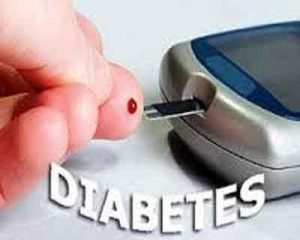- Home
- Editorial
- News
- Practice Guidelines
- Anesthesiology Guidelines
- Cancer Guidelines
- Cardiac Sciences Guidelines
- Critical Care Guidelines
- Dentistry Guidelines
- Dermatology Guidelines
- Diabetes and Endo Guidelines
- Diagnostics Guidelines
- ENT Guidelines
- Featured Practice Guidelines
- Gastroenterology Guidelines
- Geriatrics Guidelines
- Medicine Guidelines
- Nephrology Guidelines
- Neurosciences Guidelines
- Obs and Gynae Guidelines
- Ophthalmology Guidelines
- Orthopaedics Guidelines
- Paediatrics Guidelines
- Psychiatry Guidelines
- Pulmonology Guidelines
- Radiology Guidelines
- Surgery Guidelines
- Urology Guidelines
New diabetes screening recommendation misses more than half of high-risk patients : Study

Chicago : The latest government guidelines doctors follow to determine if patients should be screened for diabetes missed 55 percent of high-risk individuals with prediabetes or diabetes, a new Northwestern Medicine study found.
The 2015 screening guidelines from the United States Preventive Service Task Force (USPSTF) recommend patients be screened for diabetes if they are between 40 and 70 years old and are overweight or obese. But the study found many patients outside those age and weight ranges develop diabetes, especially racial and ethnic minorities.
Not identifying individuals with dysglycemia (prediabetes or diabetes) in these high-risk groups means they will miss out on taking preventive measures, such as eating right and exercising or taking medications. This is the first study to examine how the new USPSTF guidelines, issued in October, may perform in practice.
Under a provision in the Affordable Care Act, all services recommended by the USPSTF must be fully covered by insurers. Therefore, a patient who falls outside the diabetes screening guidelines and requests a test may have to pay out of pocket.
“Preventing and treating diabetes early is very important, especially in this setting of community health centers, where many of their socioeconomically disadvantaged patients face barriers to following up regularly,” said study senior author Dr. Matthew O’Brien, assistant professor of medicine at Northwestern University Feinberg School of Medicine and a Northwestern Medicine physician. “If you miss someone now, it might be years before they come back, at which point they have overt diabetes and maybe even complications, like heart attacks or strokes.”
The study was published in PLOS Medicine.
Fifty-four percent of white patients who developed dysglycemia fell within the screening guidelines, compared to only 50 percent of African-American patients and 37 percent of Latino patients, according to the study.
“Say I’m caring for an obese 32-year-old Hispanic woman with a family history of diabetes who had gestational diabetes with a previous pregnancy. She shouldn’t be screened, according to the guidelines, but she’s very likely to have either prediabetes or diabetes,” O’Brien said.
The study looked at electronic health record data from 50,515 adult primary care patients at community health centers in the Midwest and Southwest between 2008 and 2013.
O’Brien said the USPSTF is on the right track with their guidelines because they focus on the two risk factors age and weight that are most predictive of developing dysglycemia. However, physicians should be aware of this study’s findings, so they can understand who may be missed by the USPSTF’s criteria and decide whether to screen those patients, he said.
“We were interested to do this study because of population trends that racial and ethnic minorities are developing diabetes at younger ages and lower weights than whites,” O’Brien said.
With these findings, O’Brien said next steps are to decide what other factors should be taken into account when determining who is at risk for diabetes and to use electronic health records to automatically prompt providers to screen patients who have those risk factors.

Disclaimer: This site is primarily intended for healthcare professionals. Any content/information on this website does not replace the advice of medical and/or health professionals and should not be construed as medical/diagnostic advice/endorsement or prescription. Use of this site is subject to our terms of use, privacy policy, advertisement policy. © 2020 Minerva Medical Treatment Pvt Ltd